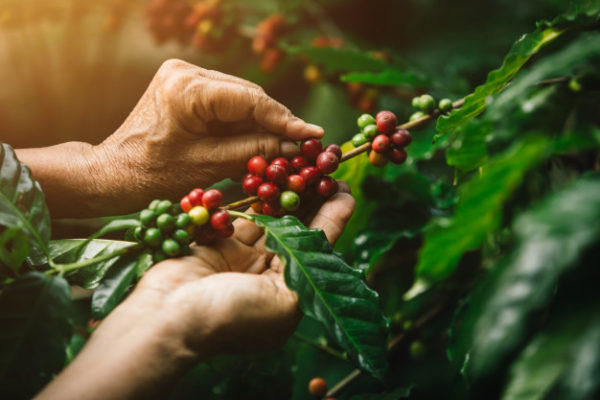Decoding the strong "Robusta guy" put on a sweet mantle.
Decoding the strong "Robusta guy" put on a sweet mantle.
As you probably already know, Robusta is the dominant type of coffee, appearing a lot in Vietnamese coffee culture because of its commerciality and the most important reason, that is, this type is very suitable for the taste of most coffee users. Statistics show that up to 95% of the total coffee production of the country is Robusta, this is not too surprising for coffee fans, right?
Pure Robusta coffee has a bold, bitter taste. Nowadays, the search and application of more pre-processing methods, typically Honey processing, sounds new, just sounds sweet. Because of that, it has helped Robusta add a special part but still ensure it is suitable for Vietnamese tastes over the years. Regardless of the type of coffee, their quality is partly determined by the processing method. There are many processing methods and it is impossible not to mention the honey processing method.

The following article Huongmai will help you understand more about this processing method. Do not miss it!
At first glance, processing honey many people will think that honey is an ingredient used in the production of coffee or like tasting honey, but it is not! This process gets its name from the adhesion by the mucilage/sugar layer present in the ripe coffee pods, which is similar to the honey of the coffee beans after being dried. When a coffee bean is separated from the berry, it is still covered in a layer of mucilage, which when dried will continue to absorb moisture from the air and become sticky. Coffee beans are dried in the sun to 12-13% moisture and take 10 to 20 days to dry completely.
The honey processing method helps to bridge the gap between wet and natural processed coffee as it often possesses the texture and sweetness of natural processing while retaining some of the acidity of wet processing. Coffee processed with honey usually has a full "body" and a long sweet aftertaste with a sour taste to create a balance. It can be seen that more and more attention is paid to processing methods, investment in improvements to improve the quality of coffee beans, bringing back a delicious and unforgettable taste every time it is mentioned.

Some variations come from honey processing methods such as: white honey, yellow honey, red and black honey. From these processing methods, reflections on the processing will be relevant, affecting the flavor and overall look of a coffee. It could become an in-depth scientific research method for the industry, as levels of mucilage - which affect the sweetness and "physicality" of coffee beans - are monitored and controlled. In fact, the more mucilage left on the beans, the sweeter the taste.
It is worth noting that a naturally processed or honey processed coffee requires that the outer covering of the ripe coffee cherries be carefully selected. The coffee berries need to be large, berry, and not crushed to produce the best quality coffee beans. However, wet-processed coffee is almost 100% dependent on the cherries that have absorbed enough natural sugars and nutrients during its growing cycle. This also implicitly asserts that factors such as variety, soil, weather, maturity, how fermentation, washing and drying take place are absolutely important. Coffee processing has long been an indispensable part in creating the flavor of a typical drink, creating a delicious cup of coffee, and bringing leisure moments closer to you.

Huongmai really hopes that this article can help you understand more about honey processing methods and add to your coffee knowledge list in the future.












